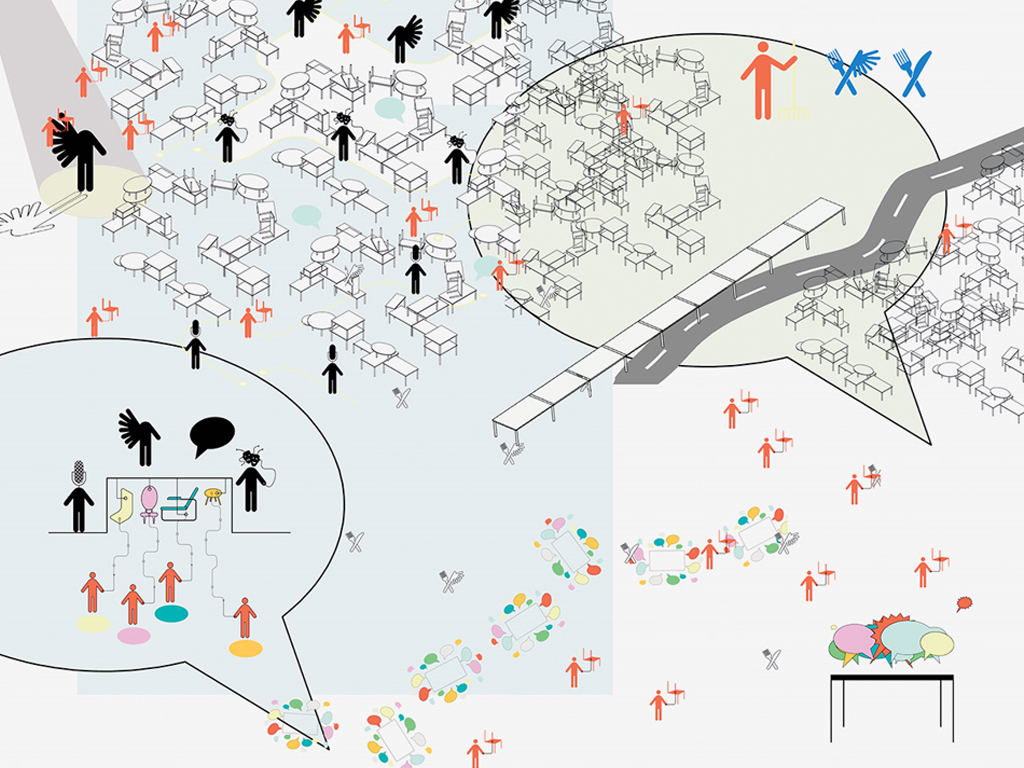

Let’s take the imagery of incompleteness in a town/city. Influential governments can remake cities in their image. But cities talk back. They do not take it sitting. It may take decades, and sometimes it is immediate. For instance, governments are taking up one new project to another which has been causing irreversible damages, ruining the old set up as well as the natural flora and fauna. And the cities surprise us with renewed challenges and threads as a result.

WE CAN THINK OF THE MANY WAYS CITITIES TRY TO COMMUNICATE & TALK BACK AS A TYPE OF OPEN-SOURCE URBANISM:
An organically planned
city is partly made through a series of meticulous interventions and little
changes from the ground up. Each of these multiple small interventions may not
look like much, but together they give added meaning to the notion of the incompleteness
of cities and that this incompleteness gives cities their long lives, thereby
outlasting other more powerful entities.
In sharp
contrast, “intelligent/Smart cities”, as referred to by hi-tech companies,
miss this opportunity to urbanize the technologies they mobilize, and seek to
eliminate incompleteness in a futile attempt. The planners of intelligent
cities, notably SONGDO in South Korea actually make these technologies
invisible, and hence put them in command rather than in dialogue with users.
One effect is that intelligent cities represent closed systems, and that is a
pity. It generally cuts their lives short significantly. They will become
obsolete sooner or later.
Beyond the imagery of open-source urbanisms, can we strengthen this positive
scenario of the city’s incompleteness by actually deploying open-source
technologies in a variety of urban contexts, by making open-source technology to
work for people the way they want? As a technological practice of innovation,
Open Source has not quite been about cities, but about the technology. Yet it
resonates with what cities have and are at ground-level, where its users are.
The park is made not only with the hardware of trees and ponds, but also with the software of people’s practices. Delhi has 8% forest area that is more or less covered with greenery. While the State has about 20% green cover. For ecological sustainability one-third of total geographical area needs to be under green foliage. It makes sense also because it supports urban life by being “city’s lung as well as spots to be in. We may take our dogs for a walk, sometimes in groups, and we may end up recovering a territory of a park.
The proliferation of
farmers’ markets is also not a top-down decision. It results from a mix of
conditions, primarily the desire of city residents to have access to fresh
produce. Here we see that a thousand individual decisions created a possibility
for viable farmers markets.
There are many diverse initiatives that produce these kinds of “third
space.” With a very different aim, yet part of the same structural
possibility, important for sustenance of complex structures like city habitat. The
implications have been well documented in Eric Klinenberg’s book Heat
Wave.
How can we urbanize the actual technology? In many ways, cities tend to
urbanize technologies semi-autonomously, since it is still not quite feasible
to simply pop open a new technology in urban space. It requires modifications,
mediations and detailed study in future. Major advances in building and other
technologies have left a massive imprint on urban space. This is perhaps most
visible in the sharp increases in density and networked systems that the new technologies
have made possible. But a closer look suggests that these modifications have to
do with overcoming rigidities and risks of getting lost in darkness.
Technologists, urban designers and artists are beginning to “urbanize”
technology (Reference: the Network Architecture Lab at Columbia,
the SENSEable City Lab at MIT, and
much of the work gathered at the Design and the Elastic Mind exhibit at MoMA).
When this happens, the cities become interactive as well as inviting spaces for
the inhabitants.
It has a way of communicating to the average residents or passers-by, and may make the most advanced applied technologies that have been applied in cities visible. The city may also occasionally portray the diversity of spatial forms through which these technological applications work, becoming legible even to the passer-by.
An attempt to achieve this could be possible by making all the major infrastructures, from sewage to electricity and broadband transparent, so if we are waiting for the bus, we can actually see how the city works and begin to get engaged. Today, when walls are installed with software capabilities, why not make this transparent? All our computerized systems could become transparent. It creates its own public shared domain.
We need to
push this urbanizing of technologies to strengthen horizontal practices and
initiatives. Leading urban civic institutions tend to “verticalize” this work
of making the urban. There is much work to be done. Recovering the
incompleteness of cities means recovering a space where the open source urban work
may thrive.